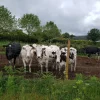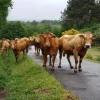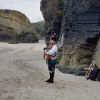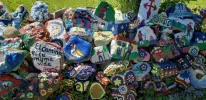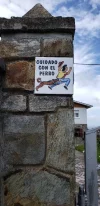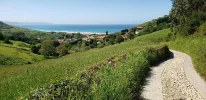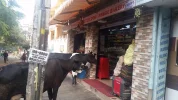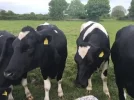- Time of past OR future Camino
- 2019
When doing a Camino in Galicia is usual seeing herds of cows driven by a shepherd and a dog. Here some curiosities about them.
- They always walk in order of age. The first position is for the oldest that receives the orders from the shepherd. She understands in Galician: right, left, up, down, stop, go, slower, faster. She knows all possible destinations on a particular route.
- A cow recognises another adult daughter in the herd but doesn't show any particular care about her.
- A Rubia Galega cow is never dangerous for an adult pilgrim with a pole/stick but some few of them could be for little children. In case of problem shout "go", she'll understand "ho" (stop).
- When driving a herd the most complicated situation, appart from cars, is if another herd is coming in the opposite direction because the cows could start a fight.
- A cow shows that is in heat mounting another cow. Then the owner will call the vet for artifitial insemination.
- They have names usually related to their appearance like Gallarda, Marela, Moura, Roxa, Toura, etc. Of course, the dog identifies the cow by its name and in case the cow doesn't obey an order it will act.
- They always walk in order of age. The first position is for the oldest that receives the orders from the shepherd. She understands in Galician: right, left, up, down, stop, go, slower, faster. She knows all possible destinations on a particular route.
- A cow recognises another adult daughter in the herd but doesn't show any particular care about her.
- A Rubia Galega cow is never dangerous for an adult pilgrim with a pole/stick but some few of them could be for little children. In case of problem shout "go", she'll understand "ho" (stop).
- When driving a herd the most complicated situation, appart from cars, is if another herd is coming in the opposite direction because the cows could start a fight.
- A cow shows that is in heat mounting another cow. Then the owner will call the vet for artifitial insemination.
- They have names usually related to their appearance like Gallarda, Marela, Moura, Roxa, Toura, etc. Of course, the dog identifies the cow by its name and in case the cow doesn't obey an order it will act.






